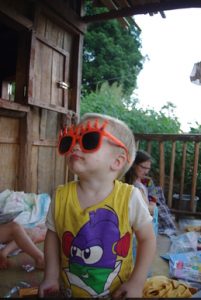24 May 2017
It was a surprise to hear from AIM-Netherlands that they were planning a visit to us. Gerla van Zandwijk served the Lord on Madagascar for five years so she was the one to come. She would have the opportunity to visit old friends as well.
After some mailing back and forth we decided that Jurgen would fetch Gerla from Tana, the capital of Madagascar. We planned the trip thoroughly as Antananarivo is to far not to do anything whilst there. First of all we needed fresh vegetables! Tana has got plenty of it. Further, more wood to fix new and old problems in and around the house. Then, the car needed a check and so did Jurgen. Jurgen was walking around with several infections for two months al ready. All in all, the trip to Tana would be well spend.
But, first things first! Gerla decided to visit our home church in Holland. Our home-front committee did not want to let this visit go to waste and they informed everyone about Gerla’s visit. It would be an opportunity to give something nice to the Hofmanns far away. Well, that was spot on! Gerla received all kinds of presents to bring along. Together with the few things she would al ready bring, she had to bring around 25 kilo of nice surprises to Madagascar. Some informed her that they were willing to pay any overweight. But God is good, the lady at the airport understood the situation, and after some work behind the computer, Gerla was allowed to check in her overweighted luggage without paying anything extra.
Jurgen and Gerla met each-other in Tana and planned the trip to Maroamboka on the 16th of May. However, they had to postpone the trip as the rear-left drumbrake of the car needed some work and two things are very important on Madagascar: Good and strong brakes and a loud klaxon. On the 17th the left at 3:30 AM in order to arrive in Maroamboka the same day at 5 PM.
 For some reason children always seem to detect odd things hidden away in cars. Somewhere between the boxes stood a big bag full of presents. Next day the atmosphere could best be described as that of a child waiting for the presents on Christmas or his/her birthday. How exciting to finally unwrap everything! Chocolate, felt pens, candy, letters, toys special Dutch orange sunglasses and t-shirts and so on and so forth. Where to begin? First chocolate or first playing with the newly gained toys? Maybe both at the same time! It was a big happening, what a feast.
For some reason children always seem to detect odd things hidden away in cars. Somewhere between the boxes stood a big bag full of presents. Next day the atmosphere could best be described as that of a child waiting for the presents on Christmas or his/her birthday. How exciting to finally unwrap everything! Chocolate, felt pens, candy, letters, toys special Dutch orange sunglasses and t-shirts and so on and so forth. Where to begin? First chocolate or first playing with the newly gained toys? Maybe both at the same time! It was a big happening, what a feast.
We introduced Gerla in the village. It was good to see the interaction between her and the people. Hardly a year ago people ran away into their house out of fear of the foreigners (us). Now, they came out of their houses to welcome Gerla. The fact that Gerla was still able to talk some Malagasy helped greatly. But, oh my! What is that white lady tall! Dadan’i Vanya (Jurgen) did tell them before but to see it themselves was something different. And wait a minute! She is not only tall but also strong. Gerla helped Jurgen to fetch water and she carried a 20 litre jerry-can full water back home.
Gerla went back to Tana on Sunday the 21st. No, that was way to short according to the people. Did she not like it here? That question was asked several times. No, that was not it, could we assure them. It is just that Gerla has so many friends on Madagascar that she is very busy to meet them all. Well, was the conclusion of the people, then this cannot be regarded as a holiday for her.
While writing this article Gerla arrived safely back in Antananarivo and has still some visits to pay. We have been spoiled with her visit and all the presents and attention from the people back home. It feels good to notice that we are not alone in this mission. We are working together to see Gods Kingdom grow!